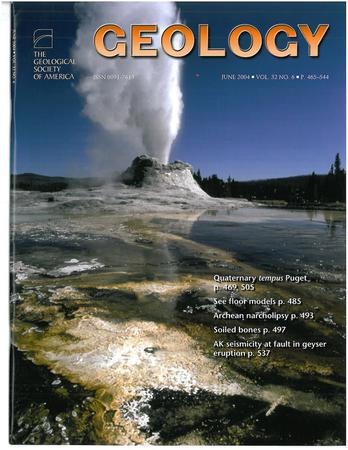High-resolution chronostratigraphy of late Mesozoic sequences in northern North China: Implications for the linkages among intracontinental orogeny, volcanism, Jehol Biota, and Pacific plate subduction
IF 4.6
1区 地球科学
Q1 GEOLOGY
引用次数: 0
Abstract
Subduction of the paleo-Pacific plate during the late Mesozoic is thought to have been responsible for the destruction of the North China craton, manifested by intense volcanism, lithospheric deformation, and dramatic changes in surface morphology and terrestrial ecosystems. However, the timing and correlations of these consequential events remain obscure. This issue was addressed here by carrying out a high-resolution geochronologic study on the Upper Jurassic−Lower Cretaceous sequences of the Luanping basin, northern Hebei Province, China. Secondary ion mass spectrometry (SIMS) and chemical abrasion−isotope dilution−isotope ratio mass spectrometry (CA-ID-IRMS) zircon U-Pb ages from samples near the boundaries of the stratigraphic units help to redefine the chronostratigraphic framework of this basin and more importantly reveal that the second phase of the Yanshanian orogeny, representing a tectonic transition from flat to steep subduction of the paleo-Pacific plate, occurred within 0.87 ± 0.10 m.y. between 134.162 ± 0.091 Ma and 133.295 ± 0.043 Ma. Crustal extension then followed and resulted in development of rift basins and vigorous volcanism. The Jehol Biota came into being in Lower Cretaceous successions formed after ca. 130 Ma. The late Mesozoic Luanping basin therefore records how the subduction of the paleo-Pacific plate drove intracontinental orogeny, volcanism, basin development, and ecosystem evolution.华北北部晚中生代层序的高分辨率年代地层学:陆内造山作用、火山作用、热河生物群和太平洋板块俯冲的联系意义
中生代晚期古太平洋板块的俯冲作用被认为是华北克拉通毁灭的主要原因,表现为强烈的火山作用、岩石圈变形以及地表形态和陆地生态系统的剧烈变化。然而,这些重大事件发生的时间和相关性仍然模糊不清。本文通过对河北滦平盆地上侏罗统—下白垩统进行高分辨率年代学研究,解决了这一问题。利用次级离子质谱法(SIMS)和化学磨损-同位素稀释-同位素比值质谱法(CA-ID-IRMS)对地层单元边界附近的样品进行锆石U-Pb年龄测定,有助于重新定义该盆地的年代地层格架,更重要的是揭示了燕山期造山运动的第二阶段,代表了古太平洋板块从平向陡俯冲的构造转变。发生在134.162±0.091 Ma和133.295±0.043 Ma之间的0.87±0.10 m.y.范围内。随后,地壳伸展导致裂谷盆地发育和火山活动旺盛。热河生物群形成于约130 Ma以后形成的下白垩统序列中。因此,晚中生代滦平盆地记录了古太平洋板块的俯冲作用如何推动陆内造山运动、火山活动、盆地发育和生态系统演化。
本文章由计算机程序翻译,如有差异,请以英文原文为准。
求助全文
约1分钟内获得全文
求助全文
来源期刊

Geology
地学-地质学
CiteScore
10.00
自引率
3.40%
发文量
228
审稿时长
6.2 months
期刊介绍:
Published since 1973, Geology features rapid publication of about 23 refereed short (four-page) papers each month. Articles cover all earth-science disciplines and include new investigations and provocative topics. Professional geologists and university-level students in the earth sciences use this widely read journal to keep up with scientific research trends. The online forum section facilitates author-reader dialog. Includes color and occasional large-format illustrations on oversized loose inserts.
 求助内容:
求助内容: 应助结果提醒方式:
应助结果提醒方式:


